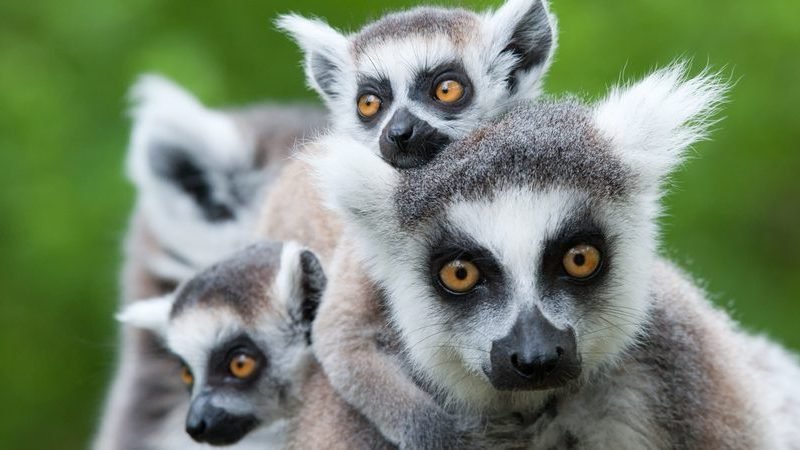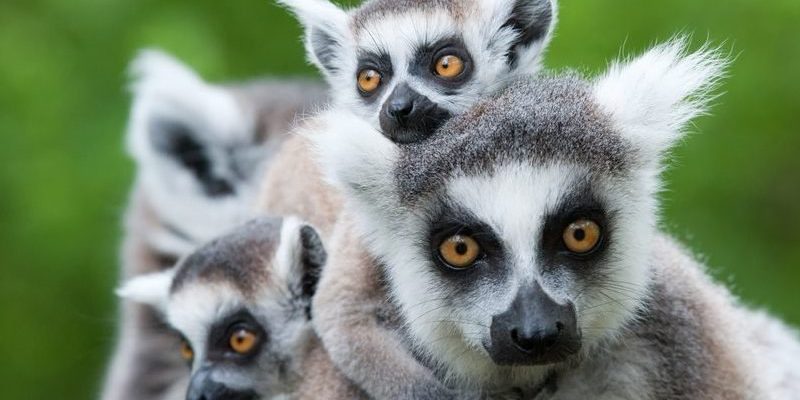
You might be wondering why lemurs are so special. They are not just another cute animal you might see on social media. They play crucial roles in their ecosystems, and understanding them helps us appreciate biodiversity and conservation efforts around the world. So grab a cup of coffee, and let’s dive into ten fascinating facts about lemurs that will give you a whole new perspective on these amazing primates.
Lemurs Are Only Found in Madagascar
Isn’t it wild that all lemurs are endemic to Madagascar? This means they can only be found there, making the island a unique treasure chest of biodiversity. Madagascar separated from the African mainland about 160 million years ago, which allowed species like lemurs to evolve in isolation.
Lemurs come in various shapes and sizes, from the tiny mouse lemur, which can fit in your palm, to the larger indri lemur, which can weigh up to 20 pounds. Their habitats range from rainforests to dry deciduous forests, showcasing the adaptability of these fascinating creatures.
The isolation of Madagascar has sculpted an entire ecosystem around lemurs. It’s not just about the lemurs, though; the island is also home to countless other unique species, many of which are endangered. Protecting lemurs means protecting their entire habitat.
Lemurs Are Social Animals
Lemurs are known for their lively social behavior. They live in groups called troops, which can range from a few individuals to over twenty. Imagine a bunch of pals hanging out, grooming each other, and playing games—that’s essentially what lemurs do!
These social structures are important for their survival. By living in groups, lemurs can watch out for each other and share food. The females usually lead the troops, which is uncommon in the animal kingdom. This matriarchal society gives lemurs a unique twist compared to other primates.
Their social interactions are fascinating, too. Lemurs engage in grooming rituals, which strengthen social bonds. You might see them sitting close together, using their hands to clean each other’s fur, while chatting away with soft vocalizations.
Lemurs Communicate in Unique Ways
You might be thinking, how do lemurs communicate with each other? Well, lemurs have a rich vocabulary of sounds, including grunts, howls, and even sneezes! Each sound has its purpose, like warning others of danger or signaling food sources.
The ring-tailed lemur, the iconic species known for its striking black-and-white striped tail, is particularly vocal. They often use loud calls to communicate with their troops. Imagine a mini-concert in the trees, where each lemur takes a turn showcasing its unique voice.
Besides vocalizations, lemurs use body language and scent marking to communicate. They have scent glands on their wrists and behind their ears, which they use to leave messages for other lemurs. It’s like sending a text message, but much smellier!
Lemurs Have Unique Adaptations
Lemurs come with some pretty cool adaptations that help them thrive in their environment. For starters, their large eyes give them excellent night vision, essential for those who are primarily nocturnal like the mouse lemur. Imagine being able to see in almost complete darkness; that’s what these little guys do!
Their strong legs and flexible feet allow lemurs to leap impressively between trees. Some species can jump over 30 feet in a single bound! It’s like watching a superhero in action, soaring through the treetops with ease and grace.
Additionally, their long tails help with balance while navigating their arboreal homes. Picture a tightrope walker using a pole to maintain balance; that’s how lemurs use their tails during their acrobatic adventures in the forest.
Lemurs Are Endangered
Sadly, lemurs are currently facing severe threats, with many species classified as endangered. Habitat loss due to deforestation for agriculture and urban expansion is a significant challenge. It’s heartbreaking to think that these wonderful animals may not exist for future generations.
Additionally, hunting and the illegal pet trade add to their woes. Some people catch lemurs to keep as exotic pets, which can severely affect their populations in the wild. Imagine losing your home and being taken away from your family; that’s what many lemurs are experiencing right now.
Conservation efforts are crucial to preserving these magnificent animals. Many organizations are working hard to protect habitats, rehabilitate injured lemurs, and educate local communities about the importance of biodiversity.
Lemurs Have a Diverse Diet
You might be surprised at what lemurs eat. They are primarily herbivores, munching on leaves, fruits, flowers, and even bark. Their diet varies depending on the season and the specific species of lemur.
For instance, the ring-tailed lemur loves to feast on fruits like figs, while others may prefer the leaves of certain trees. This diversity helps maintain the ecosystem, as lemurs play a role in pollination and seed dispersal.
But some lemurs, like the aye-aye, have a more unique approach to dining. The aye-aye uses its long middle finger to tap on trees to locate grubs and then digs them out. Talk about creative dining!
Lemurs Have Unique Reproductive Behaviors
Lemur mating rituals can be pretty interesting. The breeding season typically runs from April to May. During this time, males often engage in a playful competition to attract females. They’ll demonstrate their strength and agility to show off their fitness.
Females usually give birth to one or two babies after a gestation period of about four months. These little ones are born with their eyes closed and are entirely dependent on their mothers. It’s heartwarming to picture a baby lemur clinging to its mom’s back as they navigate the treetops together.
Interestingly, lemurs have a unique way of caring for their young. The mothers will often take turns looking after the babies, allowing them to bond with other troop members. This communal care helps the babies grow up in a loving and supportive environment.
Lemurs Are Part of Our Culture and Mythology
Lemurs have captured the human imagination for centuries. In Madagascar, they are often associated with traditional beliefs and folklore. Some locals believe lemurs are the spirits of their ancestors, watching over the land and its people.
Pop culture has also embraced lemurs, with the popular animated movie *Madagascar* bringing them to the forefront. Characters like King Julien, the fun-loving lemur, introduced many people to the charm and quirks of these primates.
By understanding the cultural significance of lemurs, we can appreciate their role in folklore and storytelling, which emphasizes the importance of conserving their habitats and the rich biodiversity of Madagascar.
Lemurs are not just cute, fluffy creatures; they are fascinating beings that play vital roles in their ecosystems and carry significant cultural value. From their unique adaptations to their social behavior, these primates remind us of the beauty of biodiversity.
As we learn more about them, we can appreciate not only their quirks but also the urgent need for conservation efforts. Ultimately, protecting lemurs means protecting the delicate balance of their natural world. So next time you see a lemur, either in real life or perhaps in a movie, remember just how special they truly are!

